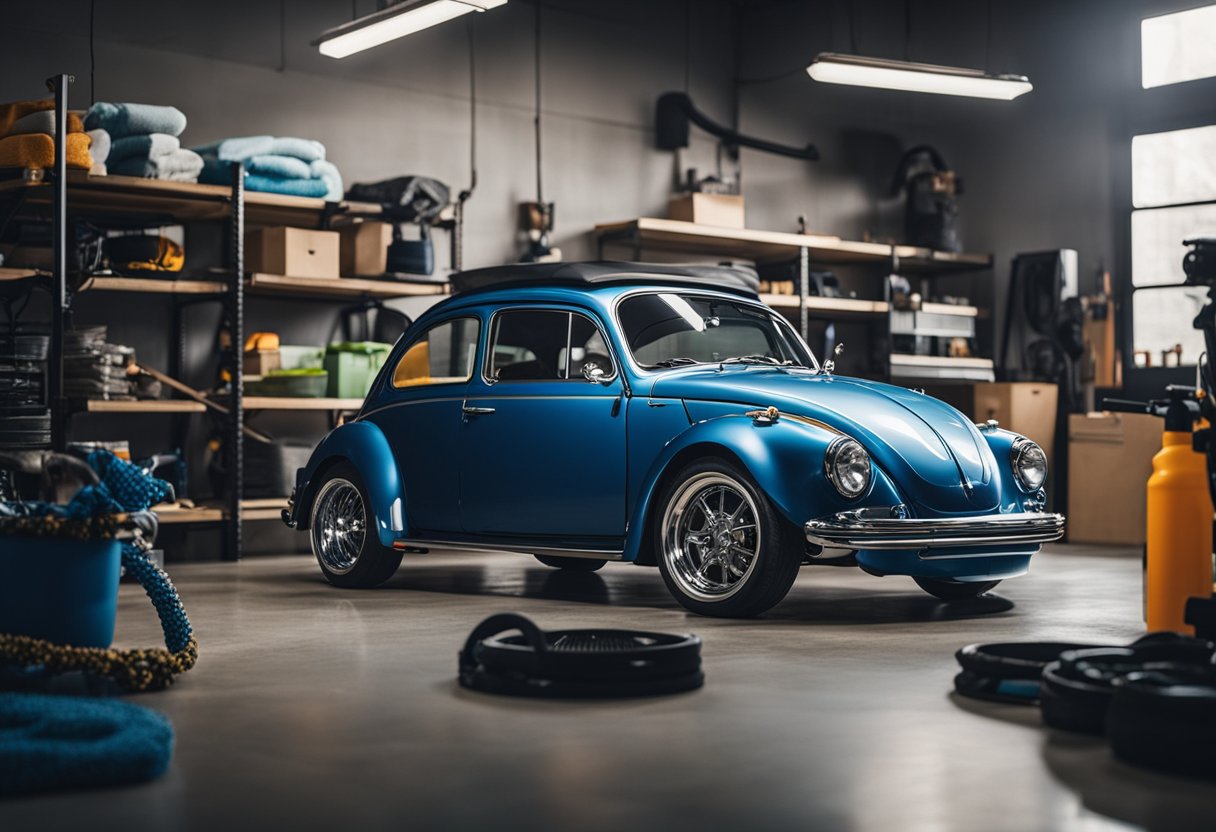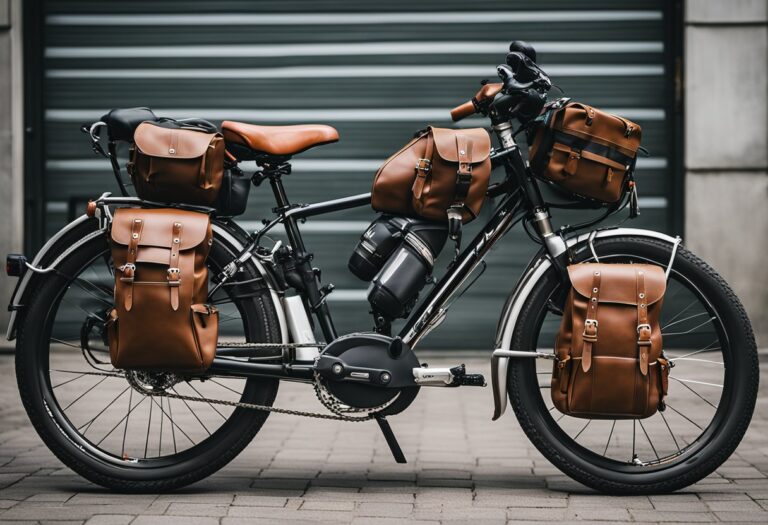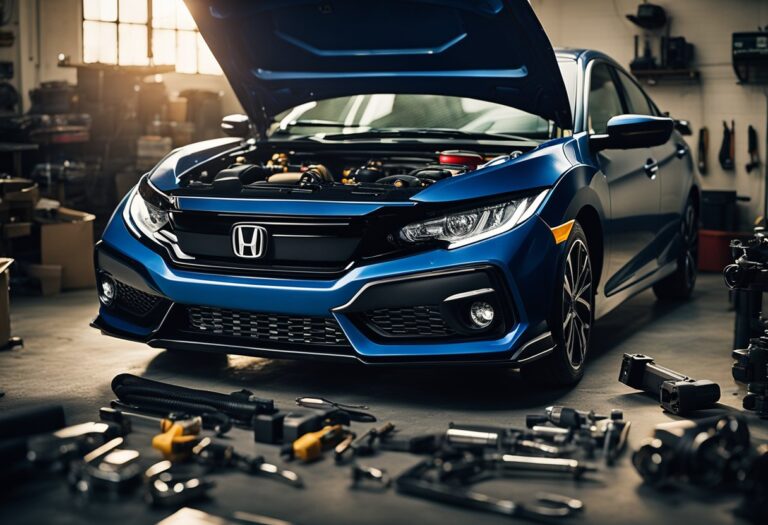Beginner’s Guide to Automotive Detailing: Tips and Techniques for a Showroom Shine
Automotive detailing is the process of thoroughly cleaning and rejuvenating a vehicle’s interior and exterior surfaces. Detailing can be done by professionals or by car owners themselves. This comprehensive guide is designed to help beginners understand the basics of automotive detailing and provide them with the knowledge and tools needed to achieve a professional-level clean.

Understanding Automotive Detailing Before diving into the world of automotive detailing, it’s important to understand the different types of detailing services available. Detailing can range from a simple wash and wax to a complete interior and exterior deep clean. This guide will cover the basics of each type of detailing service and provide tips on how to achieve the best results.
Tools and Materials To achieve a professional-level clean, the right tools and materials are essential. This guide will provide a comprehensive list of the tools and materials needed for various detailing services, as well as tips on how to properly use and care for them. By following this guide, beginners can ensure they have everything they need to achieve a flawless finish.
Key Takeaways
- Automotive detailing involves thoroughly cleaning and rejuvenating a vehicle’s interior and exterior surfaces.
- Understanding the different types of detailing services available is important before starting the process.
- Having the right tools and materials is essential for achieving a professional-level clean.
Understanding Automotive Detailing

The Importance of Detailing
Automotive detailing is the process of thoroughly cleaning and restoring a vehicle to its original condition. It involves a series of steps, including washing, waxing, polishing, and protecting the exterior, as well as cleaning and conditioning the interior.
Detailing is not just about making a car look good; it also helps to preserve its value and extend its lifespan. Regular detailing can prevent damage from environmental factors such as UV radiation, acid rain, and bird droppings. It can also protect against wear and tear caused by daily use and exposure to harsh conditions.
Detailing vs. Car Washing
While car washing is a necessary part of vehicle maintenance, it is not the same as detailing. Car washing typically involves a quick wash and rinse, whereas detailing is a more thorough and comprehensive process.
Detailing involves a deep cleaning of both the interior and exterior of the car, as well as the engine compartment and other hard-to-reach areas. It also includes the use of specialized tools and products to remove stubborn stains, scratches, and other imperfections.
In summary, automotive detailing is an important part of vehicle maintenance that can help to preserve its value and extend its lifespan. While car washing is necessary, it is not the same as detailing and does not provide the same level of protection and restoration.
Tools and Materials

Brushes and Applicators
When it comes to detailing a car, having the right brushes and applicators is essential. A set of detailing brushes with various sizes and shapes can be used to clean hard-to-reach areas such as wheels, grilles, and emblems. Foam applicators are perfect for applying wax, sealant, or dressing to the paint, while microfiber applicators are great for applying interior protectants or leather conditioners.
Cleaning Solutions
Using the right cleaning solutions is crucial to achieving a clean and shiny car. A pH-balanced car wash shampoo is gentle on the paint and won’t strip off any wax or sealant. A good all-purpose cleaner can be used to clean the wheels, tires, and engine bay. A glass cleaner should be streak-free and safe for tinted windows. And lastly, a clay bar lubricant is necessary to remove any embedded contaminants from the paint.
Microfiber Towels
Microfiber towels are the go-to choice for detailing because they are soft, absorbent, and won’t scratch the paint. A set of high-quality microfiber towels should include different types such as waffle-weave for drying, plush for buffing, and suede for glass cleaning. It’s important to wash microfiber towels separately from other laundry and never use fabric softener or bleach.
Polishers and Buffers
Polishers and buffers are used to remove swirls, scratches, and other imperfections from the paint. A dual-action polisher is recommended for beginners because it’s safer and easier to use than a rotary polisher. A set of foam pads in various levels of aggressiveness should be used with the polisher to achieve the desired level of correction. It’s important to use proper technique and not apply too much pressure to avoid burning the paint.
Interior Detailing

Vacuuming Techniques
To begin the interior detailing process, it is important to start with a thorough vacuuming. This will remove any loose dirt and debris from the surfaces, making it easier to clean them later on. When vacuuming, it is important to use the right attachments and techniques to ensure that every nook and cranny is reached.
A crevice tool attachment is great for getting into tight spaces, while a soft-bristled brush attachment can be used to gently agitate and loosen dirt from upholstery and carpet fibers. It is also important to vacuum the air vents and dashboard to remove any dust or debris that may have accumulated.
Cleaning Upholstery and Surfaces
Once the vacuuming is complete, it’s time to move on to cleaning the upholstery and surfaces. For fabric upholstery, a gentle cleaner specifically designed for automotive use should be used. It is important to test the cleaner on a small, inconspicuous area first to ensure that it does not cause any discoloration or damage.
For leather upholstery, a leather cleaner and conditioner should be used to clean and protect the leather. It is important to apply the cleaner and conditioner in a well-ventilated area and to follow the manufacturer’s instructions carefully.
When cleaning surfaces such as the dashboard and door panels, a gentle all-purpose cleaner can be used. It is important to avoid using harsh chemicals or abrasive materials that could cause damage.
Conditioning Leather
Leather upholstery requires special care to keep it looking its best. After cleaning the leather, a conditioner should be applied to keep it soft and supple. This will also help to prevent cracking and fading over time.
When applying the conditioner, it is important to use a clean, soft cloth and to work in small sections. It is also important to avoid applying too much conditioner, as this can cause the leather to become greasy or slippery.
By following these interior detailing techniques, your car’s interior will look and feel like new again.
Exterior Detailing

Washing Techniques
When it comes to washing your car, it’s important to use the right technique to avoid damaging the paint. Start by rinsing the car with water to remove any loose dirt and debris. Then, use a high-quality car wash soap and a soft microfiber mitt to gently wash the car in sections, starting from the top and working your way down. Rinse each section thoroughly before moving on to the next. Avoid using harsh brushes or sponges, as they can scratch the paint.
Clay Bar Treatment
After washing, it’s a good idea to use a clay bar to remove any contaminants that may be stuck to the paint, such as tree sap or tar. Simply spray a lubricant onto the surface and rub the clay bar over the paint, using light pressure. The clay will pick up any contaminants, leaving the surface smooth and clean.
Polishing and Waxing
To restore the shine to your car’s paint, you can use a polishing compound to remove any swirl marks or minor scratches. Apply the compound with a foam applicator pad, working in small sections and using light pressure. Once you’ve finished polishing, apply a coat of wax to protect the paint and add shine. Use a high-quality wax and a soft microfiber towel to apply and buff the wax.
Wheel and Tire Care
Finally, don’t forget to clean the wheels and tires. Use a wheel cleaner and a soft brush to remove any brake dust and grime from the wheels. For the tires, use a tire cleaner and a tire brush to remove any dirt and grime. Once the wheels and tires are clean, you can apply a tire dressing to add shine and protect the rubber.
By following these simple exterior detailing techniques, you can keep your car looking great for years to come.
Engine Bay Detailing

When it comes to automotive detailing, the engine bay is often overlooked. However, a clean engine bay not only looks great but also helps to prolong the life of your car’s engine. Here are some tips for detailing your engine bay:
Safety First
Before starting any engine bay detailing, it is important to ensure that the engine is cool. Hot engine parts can cause serious burns. Additionally, it is important to protect your eyes and skin by wearing safety goggles and gloves.
Cleaning the Engine Bay
To clean the engine bay, start by covering any electrical components with plastic bags or wrap. Then, use a degreaser to loosen any built-up grime and dirt. Let the degreaser sit for a few minutes before rinsing it off with a hose or pressure washer.
Next, use a brush to scrub any remaining dirt and grime. Be careful not to scrub too hard or use a brush with stiff bristles, as this can damage delicate engine components. Rinse the engine bay thoroughly with water and let it dry completely before moving on to the next step.
Dressing the Engine Bay
After the engine bay is clean and dry, it is time to dress it. Use a rubber or vinyl protectant to give the engine bay a shiny, like-new appearance. Apply the protectant with a clean cloth or applicator pad, being careful not to get any on the engine belts or other moving parts.
Final Touches
Finally, take a few minutes to wipe down any remaining surfaces with a microfiber towel. This will help to remove any remaining dirt and grime and give the engine bay a polished look.
By following these simple steps, anyone can achieve a clean and polished engine bay. Remember to always prioritize safety and use caution when working around engine components.






